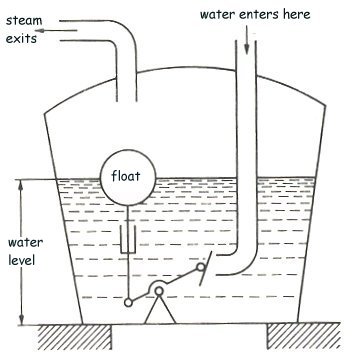Ivan Polzunov
Today, the steam engine comes to Russia. The University of Houston's College of Engineering presents this series about the machines that make our civilization run, and the people whose ingenuity created them.
The first steam engines came out of southwestern England just after 1700. They were big and complex. Europe was slow to adopt them, and it was 1755 before one reached the Western hemisphere. Almost every engine installed during the sixty years before James Watt was a low-pressure engine built in, or copied from, England.
A fine English engineer, John Desaguliers, was one of the early developers of steam power. His father, a French Protestant minister, smuggled him out of France in a wine cask when he was a baby. That was just after the Edict of Nantes had been repealed, stripping Protestants of religious freedom in Catholic France.
Meanwhile, the French Sun King, Louis XIV, had created an extraordinary array of fountains in the Gardens at Versailles. The Russian Czar created a similar summer garden for his palace in St. Petersburg. In 1717 Desaguliers went to Russia to create a steam-engine power supply for the Czar's fountains. Russia was probably the first country outside of England with a working steam engine. The Czar gave no more thought to powering his country's industries with steam than Louis XIV did. This was about play, not work.
However, by 1750, a very bright young Russian engineer, Ivan Polzunov, had become a manager in the Czar's Altai silver mines in Central Siberia. The mines' headquarters were located in St. Petersburg, next to the summer gardens. Polzunov was struck by the potential of those steam-powered pumps.
By 1763, he had a detailed plan for using steam to solve the most serious energy-supply problem in the production of gold and silver: blowing air into the smelters. As the mines expanded their smelting operation, Polzunov was given a free hand to build the engine. It became a terrible task, since technicians didn't exist. Polzunov had to do much of the manual labor himself.
But he was also at liberty to invent, and he created two utterly new features as he built his engine. One was a feedback controller to regulate the water level in the boiler. The other was a back-and-forth rotating power takeoff device, which he kept in balance by building two side-by-side cylinders instead of just one. The result was a remarkably original engine capable of delivering 32 horsepower, much more than a typical English engine could.
Then two things caused this remarkable contribution simply to be set aside. First, Polzunov, only 38 years old, died of overwork just as he finished the engine. The engine ran for several months; but, when it failed, there was no sustaining expertise to keep it running.
The other reason that Russia lost the running start that Polzunov had given her was, perhaps, even sadder. The Czar was in the mining business for profit. Polzunov's work was there to serve the Czar, not Russia. It never occurred to the Czar to capitalize upon this young man's brilliant lead and to serve the nation with it.
I'm John Lienhard, at the University of Houston, where we're interested in the way inventive minds work.
(Theme music)
Strandh, S., The History of the Machine. New York: Dorset Press, 1979, pp. 118-120.
See also entry under "Polzunov" in The Great Soviet encyclopedia [A. M. Prokhorov, editor, in chief]. New York : Macmillan, c1973-1983.

(after The Origins of Feedback Control by Otto Mayr.)
Polzunov's feedback controller for holdingthe water level constant in the steam boiler.